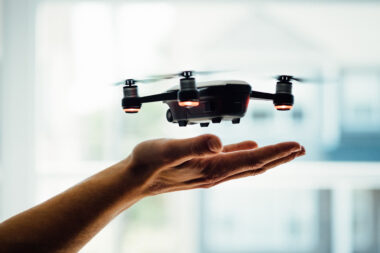In the ever-evolving landscape of urban mobility, a new chapter is being written with the advent of air taxis. These innovative Vertical Takeoff and Landing (VTOL) aircraft are set to revolutionize urban commuting, offering a swift and efficient alternative to traditional ground transportation. As we delve into the advancements in air taxi technology, it becomes evident that the skies are the next frontier for seamless and time-saving urban commutes.
The Rise of Air Taxis
Urban Congestion Woes: As cities continue to grapple with traffic congestion and the challenges of expanding infrastructure, air taxis emerge as a promising solution to elevate commuters above the gridlock. The vertical takeoff and landing capabilities of these aircraft enable them to navigate the urban airspace with ease, bypassing the limitations of traditional road networks.
Electric Propulsion Innovation: Advancements in electric propulsion systems are at the core of air taxi technology. Electric vertical takeoff and landing (eVTOL) aircraft boast eco-friendly credentials, leveraging electric power to minimize environmental impact. This shift towards sustainable aviation aligns with the broader goal of reducing carbon emissions in urban transportation.
Autonomous Flight Capabilities: The integration of autonomous flight capabilities adds an extra layer of sophistication to air taxis. Cutting-edge navigation systems and artificial intelligence enable these aerial vehicles to operate autonomously, ensuring a high level of safety and reliability in diverse urban environments.
Key Technological Advancements
Advanced Aircraft Design: Air taxis feature futuristic designs optimized for vertical takeoff and landing. Sleek and aerodynamic, these vehicles are engineered to efficiently navigate tight urban spaces, providing a comfortable and visually striking mode of transportation.
Quiet and Low Noise Profiles: Noise pollution concerns have been a historical challenge for urban air travel. Innovations in propulsion and aerodynamics aim to mitigate this issue, ensuring that air taxis operate with minimal noise disturbance, making them acceptable additions to the urban soundscape.
Networked Skyports and Infrastructure: A seamless air taxi ecosystem requires dedicated infrastructure. Skyports, equipped with landing pads and charging stations, are envisioned to be strategically located across cities. The development of a connected network of these skyports ensures efficient routes and easy accessibility for commuters.
Reducing Travel Time and Enhancing Connectivity
Swift Point-to-Point Travel: Air taxis promise to significantly reduce travel time within urban areas. By bypassing ground-level obstacles, these aerial vehicles offer a direct and rapid point-to-point travel experience, transforming hours of commuting into mere minutes.
Connectivity for Urban Hubs: The introduction of air taxis enhances connectivity between key urban hubs. Commuters can swiftly travel between business districts, airports, and residential areas, fostering economic growth and regional integration.
Software and Hardware Requirements for Air Taxis
The development and operation of air taxis involve a sophisticated integration of cutting-edge software and hardware components. From autonomous flight control systems to advanced navigation software, here’s a comprehensive overview of the key requirements for the seamless functioning of air taxis:
Software Components:
Flight Control Software:
– Description: Autonomous flight control software is the backbone of air taxis. It manages flight dynamics, navigation, and communication with ground control systems.
– Examples: Open-source autopilot systems.
Avionics Systems:
– Description: Avionics software handles aircraft systems such as communication, navigation, and monitoring. It includes electronic flight instrument systems (EFIS) and flight management systems (FMS).
– Examples: Generic avionics suites compliant with industry standards.
Collision Avoidance Systems:
– Description: Collision avoidance software is crucial for maintaining airspace safety. It incorporates sensors and algorithms to detect and avoid obstacles in real-time.
– Examples: Open-source collision avoidance algorithms.
Route Planning and Optimization:
– Description: Route planning software optimizes flight paths, considering factors such as weather, air traffic, and urban geography to ensure safe and efficient journeys.
– Examples: Open-source route planning tools.
Communication Protocols:
– Description: Reliable communication protocols facilitate seamless interaction between air taxis, ground control, and other aircraft. They ensure real-time data exchange.
– Examples: Standardized aviation communication protocols.
Cybersecurity Systems:
– Description: Given the autonomous and connected nature of air taxis, robust cybersecurity systems are essential to protect against cyber threats and ensure the integrity of communication and control systems.
– Examples: Aviation-specific cybersecurity solutions, secure communication protocols.
Operational Software:
– Description: Operational software manages booking systems, passenger communication, and ground logistics to streamline the entire air taxi operation.
– Examples: Generic operational management systems for aerial transportation.
Hardware Components:
Flight Control Computers:
– Description: Powerful on-board computers process data from various sensors and execute autonomous flight control algorithms.
– Examples: High-performance flight control computers.
Sensors Suite:
– Description: A comprehensive sensor suite includes lidar, radar, GPS, and inertial measurement units (IMUs) to provide real-time data for navigation and obstacle detection.
– Examples: Industry-standard sensor packages.
Electric Propulsion Systems:
– Description: The hardware components include electric motors, batteries, and power distribution systems for efficient and sustainable propulsion.
– Examples: Customizable electric propulsion setups.
Structural Components:
– Description: The airframe and associated structural components are designed for aerodynamic efficiency, durability, and passenger safety.
– Examples: Standardized structural components compliant with aviation regulations.
Communication Hardware:
– Description: On-board communication hardware includes transceivers and antennas for reliable data exchange with ground control and other aircraft.
– Examples: Standard aviation communication hardware.
Autonomous Navigation Hardware:
– Description: Dedicated hardware, such as processors and sensors, for executing autonomous navigation algorithms and ensuring precise positioning.
– Examples: Open-source navigation hardware components.
Power Distribution Systems:
– Description: Efficient power distribution systems manage the flow of electricity between the battery, propulsion system, and on-board electronics.
– Examples: Standardized power distribution components.
In-Cabin Systems:
– Description: Passenger-centric hardware includes seating, safety restraints, and any in-cabin technologies for a comfortable and secure experience.
– Examples: Generic in-cabin components.
The seamless integration of these software and hardware components is essential for the success of air taxis, ensuring safe, efficient, and reliable urban air mobility.
Challenges and Regulatory Considerations
Regulatory Frameworks: The integration of air taxis into urban airspace requires meticulous regulatory frameworks. Authorities worldwide are actively working to establish guidelines and standards for the safe operation of these aircraft, addressing airspace management, safety protocols, and licensing requirements.
Public Perception and Acceptance: Public acceptance is a critical factor in the success of air taxi services. Overcoming skepticism and concerns related to safety, noise, and visual impact necessitates transparent communication and thorough public education initiatives.
Aerial Mobility in Tomorrow’s Cities
As air taxi prototypes take to the skies for testing and demonstration, the vision of widespread aerial mobility inches closer to reality. The intersection of technological innovation, sustainable practices, and urban planning is reshaping the way we envision commuting in tomorrow’s cities.
Integration with Multimodal Transportation: Air taxis are not intended to replace traditional modes of transportation but rather to complement existing options. The seamless integration of air taxis with ground transportation modes creates a holistic and efficient urban transportation network.
Economic and Environmental Benefits: Beyond reducing travel time, air taxis hold the potential to alleviate urban congestion, boost economic productivity, and contribute to environmental sustainability through their electric propulsion systems.
As air taxis prepare to take flight, the urban commute stands on the brink of a transformative era. The promise of soaring above traffic, reducing travel times, and embracing sustainable aviation heralds a new chapter in urban mobility. While challenges remain, the technological strides in air taxi development pave the way for a future where the skies become an integral part of our seamless and efficient urban commutes.



